With Google’s appearance on the internet’s endless web in the late 1990s, digital products, such as movies, music albums, and video games, have started to be spread rapidly around the globe. Moreover, if a piece of content is visible on the internet for everyone to see, its privacy becomes questionable. Because it can be copied and distributed by third parties, with or without allowance. Many companies have been trying to fight piracy problems aggressively but without proper success. Even though Google is the very search engine that brings both the original and the pirated content on the search engine result page, it announced its Google Pirate update to ensure all the content available on the web stays on the right side.
In this article, we will try to explain what is Google’s Pirate update and how the algorithm works. You can also find some suggestions on how to recover your website as an SEO specialist if the pirate update struck it.
What Is Google Pirate?
Piracy has been a significant problem for most of the entertainment companies. This is because of the world wide web’s being available to everyone. As a result, Google has taken steps to impose penalties for copyright infringement by announcing the Google Pirate update in August 2012. It especially affects the rankings of websites that violate the Digital Millennium Copyright Act (DMCA). With DMCA reports against pirated content, they stop appearing on the search results and get almost invisible on SERP as a result. Google’s report on how it fights piracy contains the following principles:
- Google tries to create legal alternatives to illegal acquiring of content.
- It excludes rogue sites from the advertising services.
- The algorithm removes copyright infringing websites from SERP.
- It detects and rejects false violation accusations.
The other application against pirated content performed by Google is deleting autocomplete results, which shows up websites violating DMCA. Instead, Google highlights the legitimate search results when a search query with possible illegitimate results is entered. For example, if the search query consists of “(album name/video game name) free download,” the web user will come across promoted legitimate ways of acquiring the album or video game, in other words, paying for it.
The pirate targets the websites that have search keywords like “download for free, watch online free, online free movie/album” and many other torrent websites.
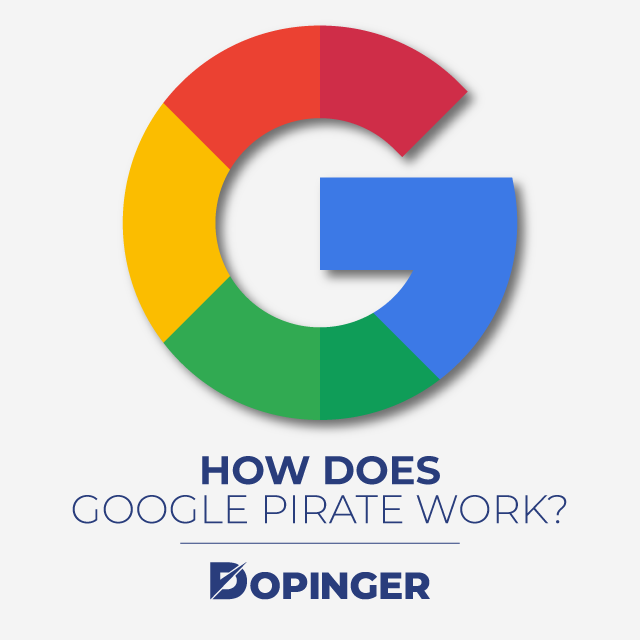
How Does Google Pirate Work?
Because of the fact that pirating movies, albums, video games, and any other digital media is a significant problem, Google receives millions of DMCA notices every month. Google can not examine every web page existing on the internet, looking for pirated content. Instead, the Pirate algorithm marks websites that violate the DMCA’s copyright guidelines. The algorithm does not remove a web page from the SERP unless the rights-owner submits a reliable copyright notice.
After the owner of the rights files a report and the report gets approved as reliable from Google, the algorithm downranks the website dramatically.
Also, we can say that the algorithm is like a filter as it filters out the torrent sites when a user enters keywords such as “watch free, download free, torrent.” However, it offers legal websites like YouTube, Google Play, Amazon, or Netflix to provide what the user is looking for.
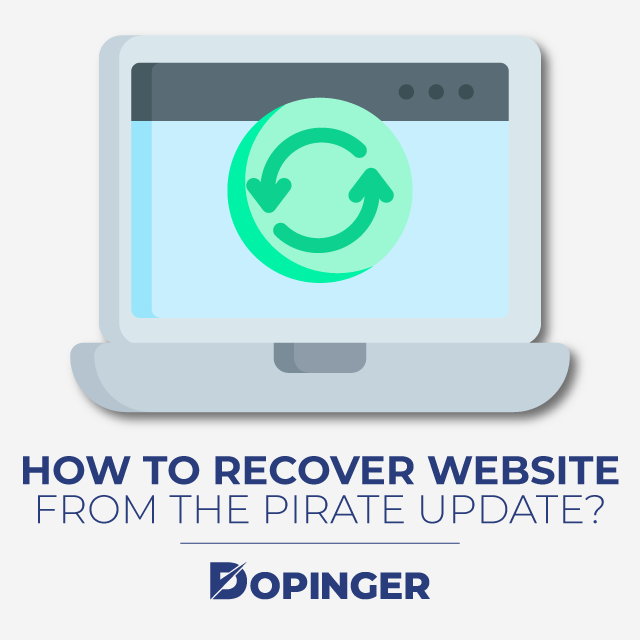
How to Recover Website From The Pirate Update?
You may have observed a decrease in the web traffic to your website and a drop in your SERP rankings. You may have some copyrighted content on your website, using it without any rights. That content could be background music or video, and it will break the DMCA rules. However, mistakes made without full understanding or knowledge of the laws can be corrected. But we do not support any violation of DMC and pirating of digital media. With that said, there are a couple of things you should consider to recover from unintentional violation of the Digital Millennium Copyrights Act.
- First and foremost, you need to remove the digital media that is pirated and violates DMCA. So if there is no illegal content, the Pirate update will not mark you and impose any penalty.
- If your website allows users to add content to your web pages, keep the main website’s domain separate from the user-made web page domains. As you will never truly know what people on the internet will publish on your website, you better be safe by separating their content from yours.
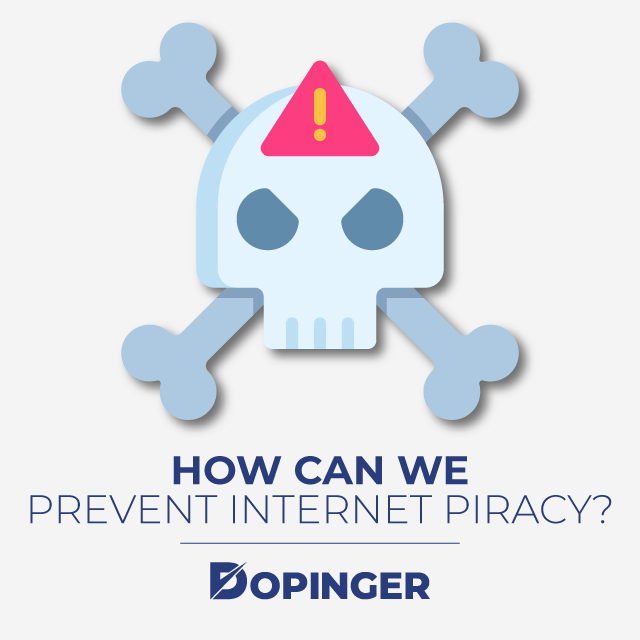
How Can We Prevent Internet Piracy?
Internet piracy has brought major digital entertainment companies a lot of problems and headaches in this streaming age. Even though there are measures taken to stop the expedition of internet piracy, more ways to get the content illegally for the pirates to deliver them to users emerge every day. So what can we do as SEO specialists, webmasters, or website owners? Do not worry, as there are many ways to protect your content from internet pirates.
Digital Rights Management (DRM)
DRM is a commonly used defense mechanism to protect content from digital piracy. This management restricts unauthorized copying of the content and allows copyright owners to impose licensing requirements.
An embedded code is implemented into the content. As a result, it prevents the content from being distributed without allowance. Also, it restricts the ways a consumer can obtain the object.
Forensic Watermarking
Watermarking can help to prevent and reduce digital piracy. A visible watermark will be helpful in deterring piracy, while an invisible watermark will help stop illegal distribution. Invisible watermarks embed unique data in media files such as a video and can not be seen by the naked eye. However, it can be detected by a watermarking solutions system. The same content can be embedded with different watermarks to identify which piece of content was copied and distributed.
Fingerprinting
It allows owners of copyrights to define if their content has been uploaded to websites illegally. For example, if a video has fingerprints from its original owner, it will be detected by YouTube’s fingerprint identification system. However, fingerprints are not as same as watermarks. Watermarking involves implanting identifiable marks into the content. So fingerprinting is the outcome of analyzing the video or audio file to create a digital fingerprint, like QR codes.
Blocking Websites
It is another tool used popularly to fight digital piracy. Copyrights holders work with Internet Service Providers (ISPs). It is to hinder access to unauthorized torrent websites. Three main methods for website blocking are:
- Internet Protocol address blocking
- Domain Name Server blocking
- Uniform Resource Locator blocking
Notices of Take-Downs
Copyrights holders can distinguish consumers who are viewing or downloading illegal content from unauthorized streaming platforms. So users will see various notices that will redirect them to obtain the content legally. Sending notices to users will remind them that they are the ones who are responsible for their actions in the online world.
Limiting Alteration of Products
Content owners can use PDF editors to prevent their documents, ebooks, or other downloadable content from illegally distributed online.
In Conclusion
To sum up, we can say that digital piracy negatively affects the whole distribution system. It affects the content creator to the distributor, all the way to the user. It is critically important for website owners, webmasters, and SEO specialists to know how to prevent online piracy of their content. Also knowing how to recover from Google Pirate update penalties caused by an unintentional violation of DMCA is essential.
Google recently changed the balance by introducing a metric called next-paint engagement (INP) to track page experience. INP stands out as an empirica...
People turn to podcasts to get daily information, have fun and spend time. The number of people who want to discover new podcasts is increasing day by...
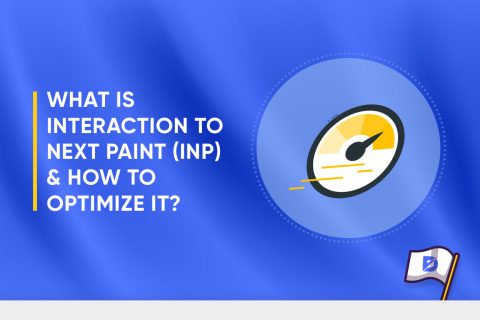
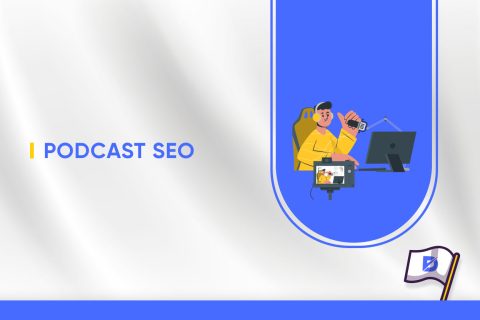

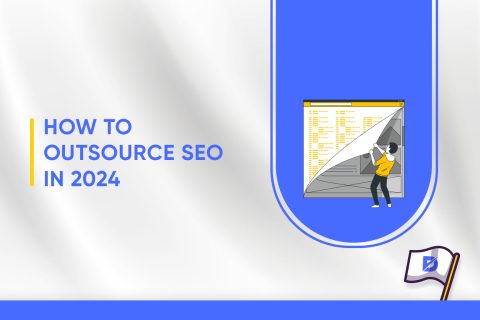
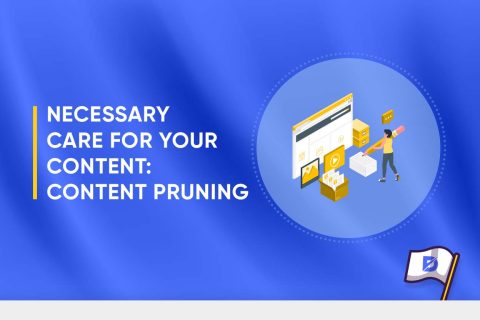
No comments to show.